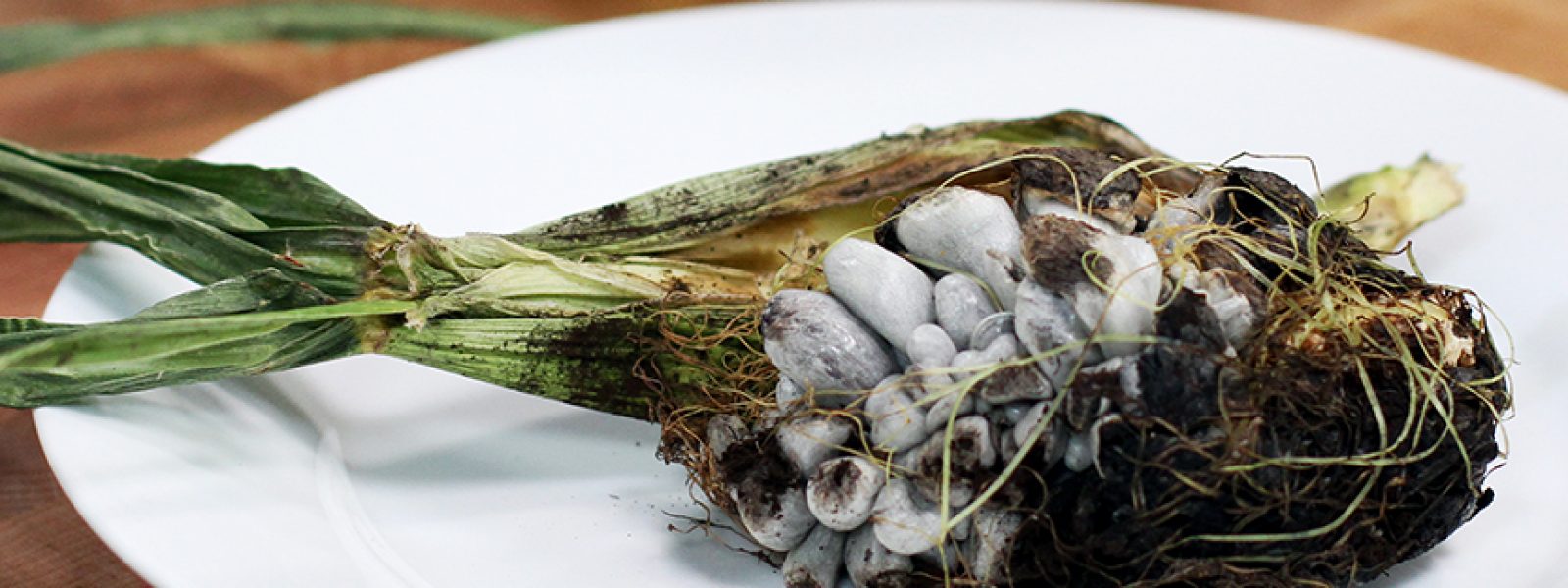What is Huitlacoche?
Easy to identify from its grey kernels, huitlacoche is a fungal mold that grows on corn. Often called corn smut or Mexican truffle, it’s considered a delicacy with its uniquely sweet, earthy, funky, antique corn flavor. Use the huitlacoche to season soups, saute it with vegetables, stuff it in a quesadilla or stir it into pasta for a dramatic presentation similar to squid ink. We were lucky enough to find this beauty in Minnesota, so ask around at the farmers market, you may be in for a treat.
WHERE IT’S FROM
Central Mexico. The name huitlacoche is Nahuatl, which is the language of the Aztecs still spoken by more than a million people in Central Mexico today. The Native American Hopi and Zuni tribes have also worked with huitlacoche
WHEN IT’S IN SEASON
Huitlacoche follows the corn season. But instead of harvesting it when the ears are ripe and ready, you get it whenever you see it, which usually happens around the rainy months. This gives the fungus a window of seasonality between May and November.
WHERE TO FIND IT
Huitlacoche can be bought at most Mexican food specialty stores and comes frozen, jarred or canned. Since you don’t have to strip the corn of the fungus, using huitlacoche in this way proves pretty easy and requires little to no prep.
If you do happen upon it fresh (like in the video above), pick the spores when they are light gray in color on the outside and have a spongy texture. Firm samples are overripe and bitter. For a superior earthy-corn taste, go for huitlacoche that forms on the ears, not the stalk.
HOW TO STORE IT
The fresh stuff can be stored in the fridge just as you would store mushrooms. It doesn’t have a long shelf life, so use it as soon as possible. Canned, frozen and jarred obviously last longer; once you open a can or jar you can keep it in the fridge and use it for weeks.
HOW TO PREPARE IT
Using huitlacoche is actually pretty easy, and adds umami to a dish. Since it’s a vegetable, you can use it raw. And because it’s a soft fungus, you don’t have to worry about chopping, pureeing or shredding, especially if you get it in a can or frozen.
You can use it the same way you’d use mushrooms in a dish. Its earthy flavor packs a lot of flavor into dishes. Sautee and add to quesadillas, sauces, serve with eggs, or puree them with cream and top grilled meat dishes.

